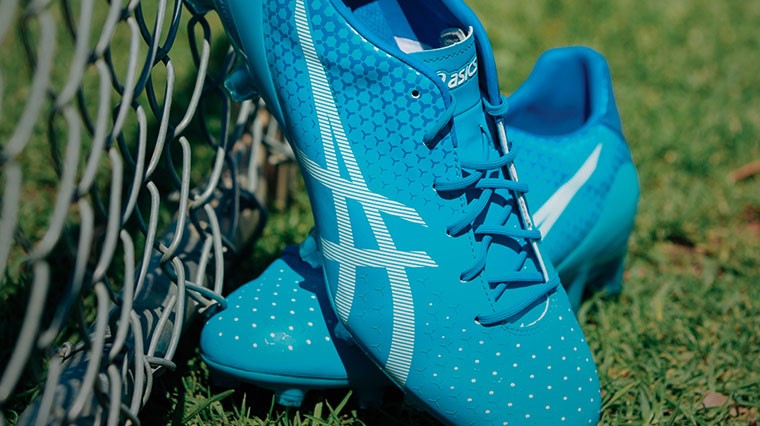How To Choose The Right Football Boots

Looking for the ultimate footy boot for when the next season kicks off?
Not only do you need a comfortable football boot, but you need the right one for your feet and the conditions to prevent injury and play like a machine.
Take a squiz at our tips below and browse our collection of football boots from leading brands like Adidas, Asics and Puma to find your perfect fit.
Fit
A well-fitted football boot reduces the risk of injury and irritation. The last thing you want is to squash your feet into too tight a boot, causing blisters and nail damage, or for your feet to be sliding around in a loose boot that’s unable to provide adequate support to your knees and ankles.
Ideally, there should be a thumb width from the end of your longest toe to the front of the boot, for a snug but unrestrictive fit.
Upper
The upper should be lightweight, durable and supportive to handle tackling, high speed direction changes and kicking. Kangaroo leather has become increasing popularity for its flexibility, conforming to your natural foot shape while remaining strong and light for a fast feel and agility.
Leather uppers provide greater stretch than synthetic materials - keeping in mind that your feet may naturally swell throughout the course of a match to increase circulation and that many brands offer strong synthetic/leather blends.
The lacing system is positioned in the centre of most AFL boots, whereas off-centre lacing systems (including various Puma models) are typically targeted towards soccer players.
Midsole
Traditional football boots lack a midsole and may provide insufficient shock protection, potentially causing damage to your soft tissues when impacting on studs or hard fields.
Keep an eye out for football boots with midsole cushioning and support or an appropriate heel gradient. Asics use a 10mm heel gradient in all football boot models, and if you have an active youngster that's susceptible to sever’s disease (repetitive stress injury), or if you suffer from knee pain, Achilles tendinopathy, shin splints or other lower limb injuries they’re a good option; e.g. the Asics Gel Lethal Ultimate.
Many players opt to wear cushioned boots during training and a traditional style such as Adidas or Nike boots that commonly have a flat midsole, during competitive matches to keep bulk to a minimum.
Screw-In Versus Moulded Studs
Traction varies considerably between football boots, so you must consider the conditions of pitches you play on.
Screw-In Studs – Soft Ground
Screw-in studs (18-21mm) are made from hard rubber or metal and are usually longer than the standard moulded stud (10-12mm), allowing them to better penetrate soft grounds including in wet or muddy conditions where improved traction is beneficial.
There are less studs in a screw-in boot (6 – 8) than a moulded boot, with the larger space between studs preventing mud from becoming trapped on its underside.
Avoid using longer studs on hard grounds because if they are unable to sink into the surface adequately it’ll feel like you’re running on rocks - they’ll hinder your balance, the pressure points will increase stress on your feet and you’ll be at higher risk of rolling your ankle.
Screw-in boots can be customised with studs to increase versatility on soft grounds and worn out studs can be replaced as required, but they're an uncommon choice for amateurs and are less available than the moulded varieties.
Moulded Studs - Firm Ground
Firm ground football boots are your versatile all-rounder - a popular choice for Aussie conditions, particularly firm grass with limited give. Although they’re not the bee’s knees when it comes to wet or muddy surfaces, they’ll do the trick in a pinch.
At 10-12mm, moulded rubber or plastic studs are shorter than screw-in studs for soft grounds, are lighter and are integrated into the boot.
They are suitable for sensitive feet, as they have a greater number of studs compared to screw-in boots, ensuring weight is distributed more evenly across the boot and minimising stress on pressure points and improving support.
If you’re an amateur or weekend warrior with a budget for only one pair of boots this season, firm ground boots are a safe bet.
Outsole
Match your foot type to the appropriate outsole width to ensure proper stability. Too narrow a width and your foot may overlap the outsole inside the boot, minimising your stability, causing strain to the upper and putting the footy boot at risk of tearing.
There should be no
stud beneath your big toe joint to avoid discomfort and to ensure flexibility
where your toes naturally bend. Overall the outsole should offer a
rigid platform.
